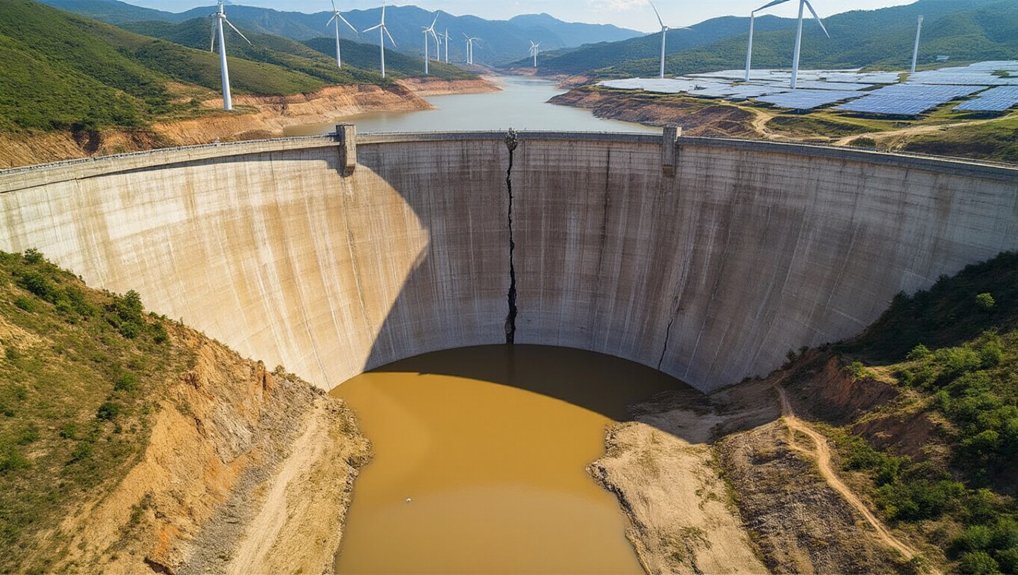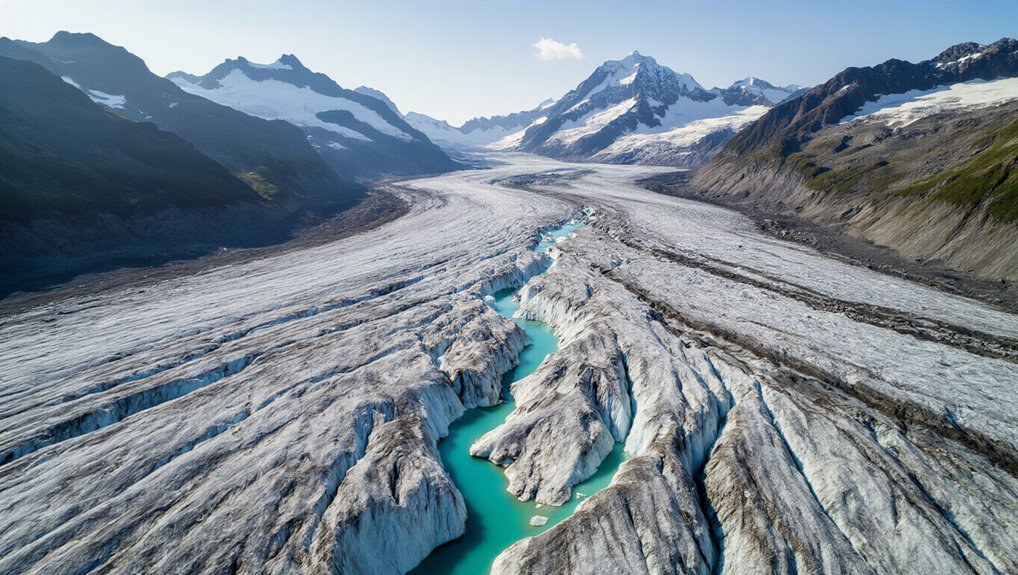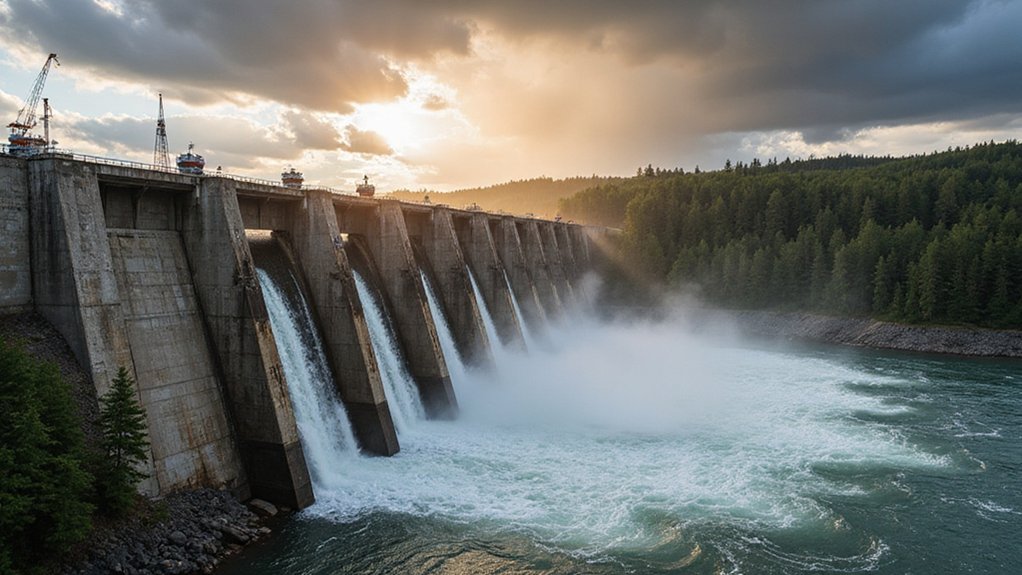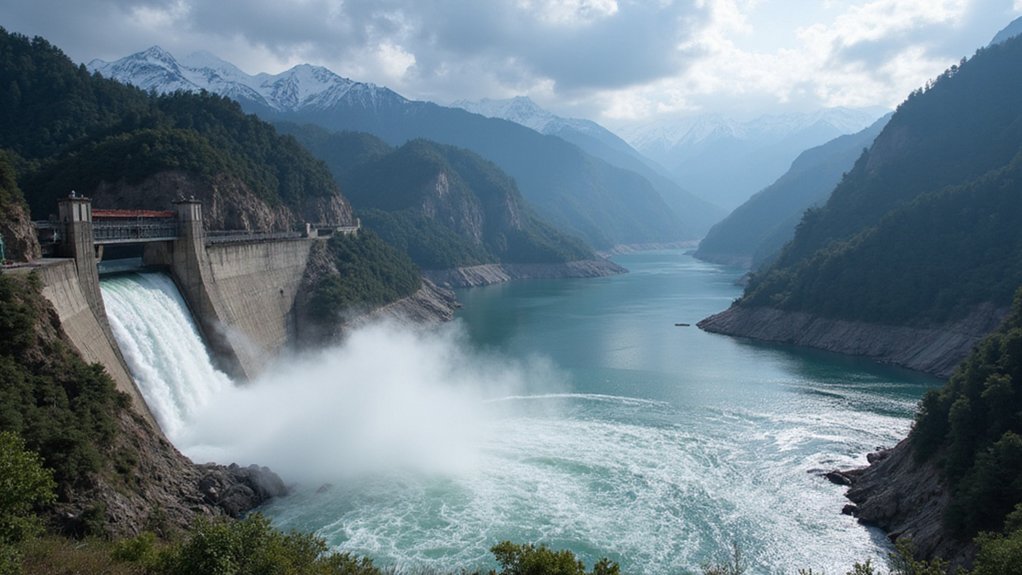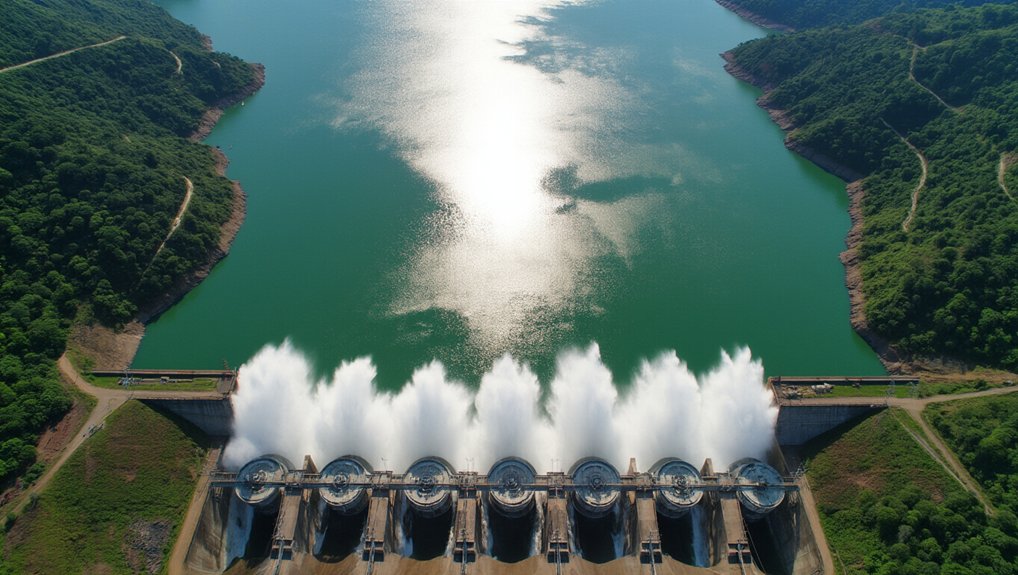Why is America’s once-mighty hydropower sector now running on fumes? Search no further than our crumbling dams. Nearly 70% of our 92,000 dams will be over half a century old by 2025. That’s not vintage—it’s ancient.
These relics earned a pathetic D+ grade on the latest Infrastructure Report Card, which is about as impressive as getting a participation trophy at a science fair.
America’s dams are held together with duct tape and wishful thinking—engineering marvels turned maintenance nightmares.
Money’s the real problem. The Infrastructure Investment and Jobs Act tossed a measly $3 billion toward dam repair—pocket change compared to what’s needed. And guess what? They couldn’t even commit to that, redirecting $364 million elsewhere. Classic Washington move.
Meanwhile, these aging structures keep deteriorating, pumping out less electricity while becoming more dangerous by the day. With over 17,000 dams classified as high-hazard potential, the public safety risks continue to mount.
Environmental issues aren’t doing hydropower any favors either. Big dams flood ecosystems, displace communities, and turn vegetation into methane factories. Not exactly the green image they’re going for.
This environmental impact is particularly concerning when you consider that lifecycle emissions from some hydropower reservoirs can actually exceed those of fossil fuel plants.
Plus, try building a new dam nowadays. Good luck getting through the regulatory gauntlet and environmental protests. It’s like trying to open a coal plant at a climate conference.
The geography doesn’t help. We’ve already dammed most of the good spots. Wind turbines and solar panels? Slap those babies almost anywhere with decent conditions. They’re the cool kids at the renewable energy party, while hydropower stands awkwardly by the punch bowl, reminiscing about its glory days.
Climate change is the final nail. Droughts are making reservoirs look like mud puddles in many regions. California’s dam operators stare anxiously at water levels while farmers and cities demand their share.
It’s a water tug-of-war, and electricity generation often loses. When you consider that greenhouse gases from human activities are accelerating these climate impacts, the future looks even bleaker for hydropower’s reliability.
References
- https://www.waterpowermagazine.com/news/us-hydropower-sector-faces-infrastructure-challenges-amid-investment-push/
- https://climate.mit.edu/ask-mit/why-arent-we-looking-more-hydropower
- https://www.eia.gov/todayinenergy/detail.php?id=65286
- https://www.usip.org/publications/2022/10/how-balance-hydropower-and-local-conflict-risks
- https://www.powermag.com/hydropower-growth-continues-though-policy-challenges-loom-in-u-s/
